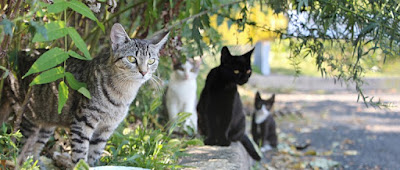Feral cats are not just predators that kill large numbers of Australian wildlife, they may also be spreading parasitic disease to native animal species, according to new research analysing the impact of cat populations in South Australia.
The study, published in the journal Wildlife Research, examined Toxoplasma gondii (T gondii), a cat-borne parasite that can cause the disease Toxoplasmosis in a range of species.
Researchers tested western grey kangaroos that had been culled on Kangaroo Island for the presence of the animal antibody to the parasite.
Kangaroo Island has high populations of feral cats and the results from the samples were compared to another site on the Fleurieu Peninsula on the mainland, where feral cats are present but in much lower numbers.
About 10 kangaroos were sampled on the mainland and then on the island at two month intervals for a year and tested for T. gondii antibodies.
The test results showed a significant difference in the presence of antibodies when the two sites were compared, with 20% of culled kangaroos they tested on the island producing a positive result, while none of the culled kangaroos on the mainland tested positive.
The researchers also tested road-killed western grey kangaroos on the island to see if there was a higher prevalence of antibodies in those animals than the culled kangaroos. Their samples of 102 kangaroos found as roadkill produced an almost identical result, with 21% testing positive for the antibody.
In another set of tests, the scientists looked at road-killed tammar wallabies and found 15% produced a positive result.
Patrick Taggart, an adjunct fellow at Adelaide University and the study’s lead author, said past research had shown that cats on Kangaroo Island had a higher prevalence of the parasite when compared to the mainland.

Comments
Post a Comment